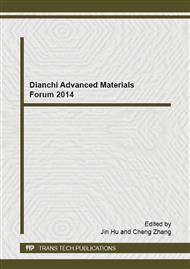p.290
p.297
p.302
p.307
p.312
p.317
p.323
p.329
p.335
Effect of Solid Reaction Temperature on the Cation Mixing and Electrochemical Properties of LiNi0.4Co0.2Mn0.4O2 Catode Materials in High Energy Li-Ion Batteries
Abstract:
A LiNi0.4Co0.2Mn0.4O2 material was prepared via the co-precipitation in solution and ensuing solid reaction of the prepared precursors with LiOH.H2O, investigating the influence of solid reaction temperature on the cation mixing and electrochemical performance of the materials as a cathode. The results show that Li+/Ni2+ cation mixing decreases with the increase of calcination temperature in the range of 700-900°C, and the lower degree of cation mixing can improve 2D layered structure and make the material more stable. The discharge capacity and the capacity retention rate of the material is strongly impacted by the reaction temperature.The powders calcined at 900°C show the best electrochemical performance and the initial discharge capacity is 163.1mA·h/g, after 40 cycles, the capacity retention rate is 93.9%.
Info:
Periodical:
Pages:
312-316
Citation:
Online since:
November 2014
Authors:
Keywords:
Price:
Сopyright:
© 2014 Trans Tech Publications Ltd. All Rights Reserved
Share:
Citation:


